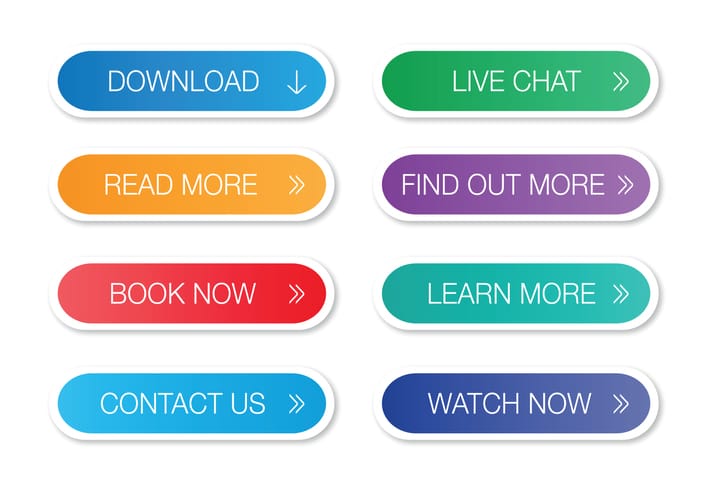Using Buttons on a Website Can help Improve Usability

Categorized in: B2B Digital Marketing
Buttons in web design are often used to initiate a specific action or give feedback. They come in two primary styles: buttons with text only and buttons with text and icons. Buttons are one of the essential elements of any website. One can use them to initiate a specific action, give feedback, or provide extra content. Users who need to complete a task will often click on buttons. This action can have positive or negative consequences depending on how well the buttons are implemented and whether or not they’re effective at accomplishing their intended purpose.
How Using Buttons on a Website Helps to Improve Usability
1. Ease of Use
Buttons on websites can help users accomplish tasks more quickly and efficiently. It is valid for both buttons with text only and those containing both text and icons. Buttons allow users to choose within a specific context without leaving the page or searching through a long list of links or options. The user knows in advance what action will occur when the button is clicked, so they can make an informed decision about whether or not they want to act.
2. Visual Feedback
Buttons provide a method for providing the user with immediate visual feedback. One can use text-only buttons to identify specific actions or concepts while they remain greyed out or inactive. The user can see what will occur when the button is clicked rather than guess their meaning based on what might happen if they click them. Icons on buttons can reinforce the meaning intended by the text or add another dimension of meaning to it.
3. Hiding and Revealing
Users who have to complete a specific task on a website will often have to click through a series of links and options to complete their goal. It can be frustrating, especially if some elements are hidden or not immediately available once the user clicks on them. Buttons that come with hidden icons allow users to get immediate feedback about the actions that will be affected.
4. Single Functionality
One can use buttons to accommodate a specific one-time action while they remain greyed out or inactive. It is helpful on websites where the user is trying to complete a task but might need first to visit or discover other related pages. The user can click on the button or link and then visualize that their action was successful.
One can use buttons with text and icons to provide the user with immediate visual feedback about the actions affected by clicking on them. It is helpful for buttons with a single function, such as adding comments or commenting on blog posts.
5. In-Context Learning
The use of buttons in web design can help users learn how to do new things more quickly and efficiently, either because they’re new to the site they’re visiting or because they’re new to using computers in general. Icons on buttons can reinforce the meaning intended by the text or add another dimension of meaning to it.
6. Content Overflow
The common problem is designing a website that includes multiple pages but has only one way to take any action on them. For example, clicking one link will take you to all of the articles on your site. In this case, user testing can help determine what function the button should have on each page. Suppose visitors tend to repeatedly click on the same function (for example, go to all the pages in your site with a specific name).
What is currently being done should likely be incorporated into the button. Another option is to design buttons that change based on what is being done. If multiple actions are available, they will appear slightly different from one another or have different icons or labels.
7. Context-Specific Message
Buttons can be used as a primary method of providing context-specific feedback about current action taken. It is true whether they contain text and icons or are a single color that doesn’t provide any feedback. The use of buttons can help to contextualize the feedback given to the user so that they know what action is happening. If a button turns red when it’s clicked on, users will know it was successful. Suppose there is no difference in appearance between active and inactive buttons. In that case, users will not have any context for knowing which actions were completed as intended and which actions didn’t work as intended.
Buttons on a website can help improve usability by providing the user with contextual feedback, identifying actions and tasks, and hiding information that isn’t immediately relevant. One can use them to make it easier for users to accomplish their goals after they’ve clicked or provide quick feedback about what’s happening. The use of buttons can help users learn how to do things more quickly, whether they’re accessing information for the first time or trying to complete a specific task.
LIKE AND SHARE THIS ARTICLE:



